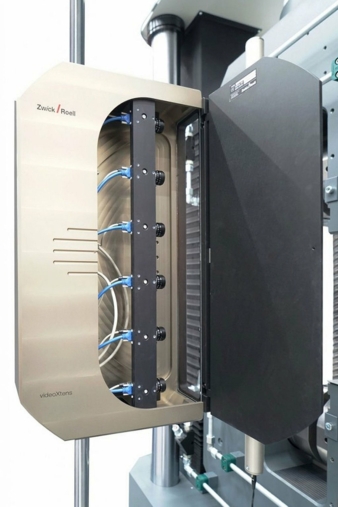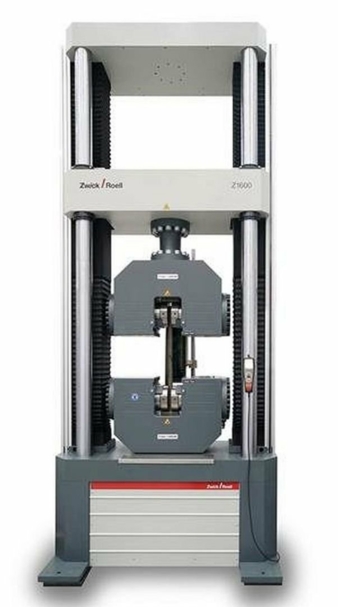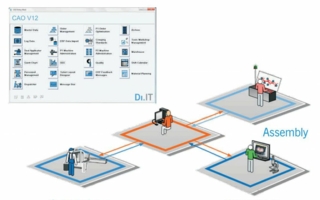06/05/2019
Testing system for concrete reinforcing steel
Tensile stress in concrete is poorly tolerated. Therefore the constructions are reinforced with bars, mats or rings. As a safety-relevant structural material, reinforcing steel is subject to official control. German Zwick Roell offers testing machines up to 5,000kN for tensile tests.
Concrete is resistant to pressure. But tensile stress is rather poorly tolerated. Concrete constructions therefore are reinforced with embedded steel in the form of bars, mats or rings. This improves the concrete structures. They become more stable, which makes it possible to construct forms and buildings which would be unthinkable without reinforcement.
German company Zwick Roell has developed a new system for tensile tests on reinforcing steel according to DIN 488-2, ISO 15630 or ISO 6892-1: The machine works with a non-contact extensometer as well as a hydraulic specimen holder, which can hold specimens from 10mm up to 50mm in diameter with a single pair of jaw inserts. This saves time and money by eliminating the need to change jaws with different specimen diameters.
The “Video Xtens” extensometer with six integrated cameras measures strain to fracture and beyond without contact. The elongation at break is determined automatically. The six cameras together cover a measuring range of 680mm – with an initial measuring length of 50mm to 500mm. Thanks to the rib detection on the reinforcing steel, no manual marking is necessary. Designed for accuracy class 1, the Video Xtens has a resolution of 0.6µm.
Using an optional test re-run module, the strain can subsequently be recalculated by means of a test recording. This function is particularly useful if the necking of the specimen is not in the expected range, but outside the original measuring length. Here an invalid test on other systems remains completely evaluable. With the further option “Strain distribution” the adjustment can even be carried out during the tensile test. The initial measuring length is then automatically shifted to the range of the highest strain, which guarantees that the specimen break occurs within the measuring length. This minimises the number of failed tests.
Zwick Roell GmbH+Co. KG
August Nagel-Strasse 11
89079 Ulm/Germany
Contact person is Mr. Wolfgang Moersch
Tel.: +49 7305 10-0





